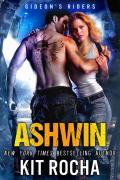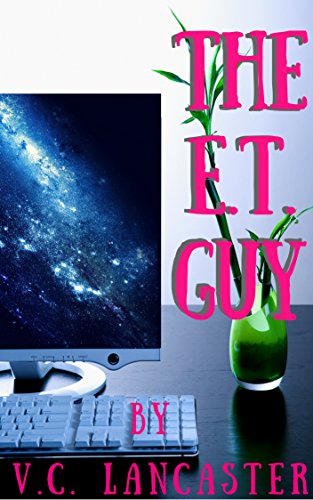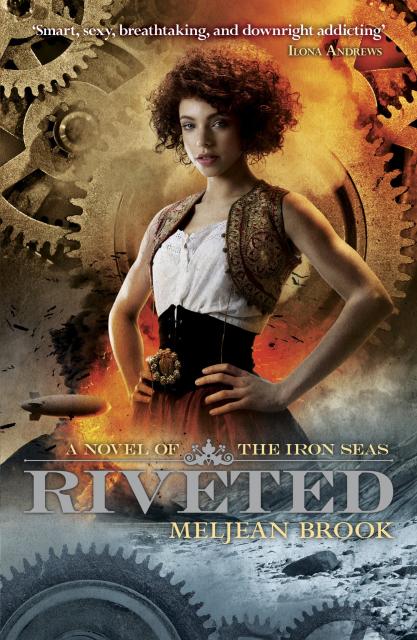Virgin Martyrs: Hagiography and the Popular Romance Compared
It's not that unusual to see criticism of modern romance heroines for being martyrs (e.g. one reviewer mentions that a pet peeve is "martyr heroines to gambling/drunken fathers or brothers"), but Jocelyn Wogan-Browne's analysis of medieval hagiography (biographies of saints), which draws comparison with romance novels, is using the term literally, which I found interesting. Before I give some quotes from Saints' Lives and Women's Literary Culture, 1150-1300: Virginity and its Authorizations (2001), it's probably helpful to clarify that "The recorded life of a confessor saint is called by the Latin word uita ('life'), that of a martyr a passio ('passion', in the sense of suffering)" (Marsden 206).
The courtly and nuptial virgin is the heroine of ‘rumanz’ in both its major Anglo-Norman meanings: she is the predominant vernacular female saint and her passion is an extended and stylized display of romance constancy to the highest-ranking bridegroom of all. Her passio can be related both to chivalric courtly romance and to the romance modes of modern popular culture. (Wogan-Browne 96)
For information about the modern romance novel Wogan-Browne draws on "the classic analyses of Mills and Boon (Harlequin) romance by Janice Radway" (97). I feel compelled to point out that I have checked Radway and the books she analysed were not in fact Harlequin/Mills & Boons as Wogan-Browne states but mostly longer single-title romances. I've listed them at the end for anyone who's interested. It's perhaps worth noting that Radway's book was published in 1984 and so the novels she studied dated from between 1972-1981. This means that while the comparison between these books and the medieval passio is interesting, one should perhaps be careful before extrapolating to "the modern form of nuptial romance" (Wogan-Browne 96). Admittedly, it doesn't seem wrong, from the perspective of a medievalist, to consider both the twentieth and twenty-first centuries "modern" but scholars of the modern popular romance novel would generally argue that quite a lot has changed in romance writing since the 1970s and 1980s. For one thing, virgin heroines are a lot less common than they were. Anyway, according to Wogan-Browne
The principal difference between the passio and the modern form of nuptial romance (see Figure 3) lies in the distribution of the suitor role. In the modern romance the hero (‘sign of the patriarchy, enemy and lover’, as Jan Cohn calls the romance and novel hero) is a single figure, offering emotionally warm and emotionally cruel behaviour to the heroine in turn. (His cruelty is later ‘revealed’ as not really intended to damage her and as a sign of his vulnerability/love/need.) The medieval passio uses Christ and the pagan for these opposed aspects of the hero role. Christ sums up all aspects of the romance hero role in himself. [...] But although presented as a gentle spouse and supremely courtly lover, Christ can also resort to emotional blackmail and threats of violence at which a pagan might blush and which suggest an area of identity between the male rivals in the suitor role. Christ can boast bigger and longer-lived fires and more torturers in hell than any pagan empire can command, as well as a bigger, better, and higher-ranking court in heaven and an unchallengeable role as the most powerful and desirable bridegroom in the universe. (That Christ is also so often represented as a maternal healer and nourisher, comforting and feeding heroines in their dungeons, completes the romance parallel: modern romance heroes are also both superheterosexual heroes and, at the peripeteia of the narrative, the providers of maternal nurture and care.) (96-97)
Wogan-Browne's figure 3 is in two parts, with one taken from Radway's work (it appears in the 1991 edition on both pages 134 and 150, with a very slight variation between the two) and the other, parallel in structure, created by Wogan-Browne to describe the comparable situations in a medieval passio. For ease of comparison, I've copied out the 13 lines of what Radway (R) calls "the narrative logic of the romance" (150) and placed the equivalent line from Wogan-Browne's figure (98) alongside it, preceded by the initials WB.
- R-The heroine's social identity is thrown into question. WB-The heroine is young, beautiful, rich and noble [i.e. nuptial], and brought up in a pagan household. Her social [pagan] identity is thrown into question by her own and the audience's knowledge of her true [Christian] identity.
- R-The heroine reacts antagonistically to an aristocratic male. WB-When approached by an aristocratic [pagan] male suitor/tyrant, she refuses him (she has already accepted an aristocratic [Christian] male suitor/lord).
- R-The aristocratic male responds ambiguously to the heroine. WB-The pagan insists that he loves/honours/desires her and that she must give in to him.
- R-The heroine interprets the hero's behavior as evidence of a purely sexual interest in her. WB-The heroine interprets his insistence as evidence of idolatrous [sexual] interest in her [as opposed to the Christian [romance] interest in her of her Christ bridegroom].
- R-The heroine responds to the hero's behavior with anger or coldness. WB-She responds with anger and coldness.
- R-The hero retaliates by punishing the heroine. WB-The [pagan] bridegroom-hero responds by punishing the heroine, often by having her stripped, whipped, and thrown into a dungeon in order to bring her to compliance.
- R-The hero and heroine are physically and/or emotionally separated. WB-The heroine and [pagan] bridegroom-hero are now physically separated.
- R-The hero treats the heroine tenderly. WB-The [Christ] bridegroom-hero gives the heroine care and nurture in the dungeon [angels or Christ himself appear to feed her/tend her wounds].
- R-The heroine responds warmly to the hero's act of tenderness. WB-The heroine responds warmly to the [Christ] bridegroom-hero.
- R-The heroine reinterprets the hero's ambiguous behavior as the product of previous hurt. WB-The heroine interprets the duality of the bridegroom [pagan/Christian; cruel/kind; idolatrously sexual/romantically desirous] as a function of the fallen world's sinfulness, for which the [Christ] bridegroom has previously suffered enormous hurt [on the cross].
- R-The hero proposes/openly declares his love for/demonstrates his unwavering commitment to the heroine with a supreme act of tenderness. WB-The [Christ] bridegroom now openly invites the heroine into his heavenly bower, while the [pagan] bridegroom demonstrates his unwavering commitment to [lacerating, dismembering, and consuming] the heroine, and openly threatens her with beheading.
- R-The heroine responds sexually and emotionally to the hero. WB-The heroine says yes to the bower/beheading of the [Christ]/[pagan] bridegroom.
- R-The heroine's identity is restored. WB-The heroine's eternal identity is confirmed as she becomes what she was always going to be, a bride of Christ and a saint in heaven.
This comparison works because the novels Radway analysed were written in a period in which, as romance authors Linda Barlow and Jayne Ann Krentz wrote in 1992, the romance novel did tend to rely on "romance plot devices [...] rendered complex by their paradoxical nature: [...] heroes who also function as villains; victories that are acts of surrender; seductions in which one is both seducer and seduced; acts of vengeance that conflict with acts of love" (Barlow and Krentz 18). I'm not sure the comparison would work so well if applied to most twenty-first-century romances (or, indeed, to romances from previous decades which did not fit Radway's scheme).
I thought I'd better check which novels Radway consulted in order to compile her "narrative structure of the ideal romance" (Radway 134). The novels Radway selected were a very small group of novels which reflect the preferences of a small sub-set of romance readers.The novels are:
- Woodiwiss, Kathleen: The Flame and the Flower (Avon 1972); Shanna (Avon 1977); The Wolf and the Dove (Avon 1974); Ashes in the Wind (Avon 1979)
- De Blassis, Celeste: The Proud Breed (Coward, McCann & Geoghegan 1978)
- McBain, Laurie: Moonstruck Madness (Avon 1977)
- Marten, Jacqueline: Visions of the Damned (Playboy Paperbacks 1979)
- Lindsey, Johanna: Fires of Winter (Avon 1980)
- Dailey, Janet: Ride the Thunder (Pocket 1980); Nightway (Pocket 1980)
- Peters, Elizabeth: Summer of the Dragon (Dodd, Mead & Company 1979)
- Deveraux, Jude: The Black Lyon (Avon 1980)
- Spencer, LaVyrle, The Fulfillment (Avon 1979)
- Lee, Elsie: The Diplomatic Lover (Brandywyne Books 1971)
- Ellis, Leigh: Green Lady (Avon 1981)
- Kent, Katherine: Dreamtide (Gallen 1981)
- Afton Bonds, Parris: Made for Each Other (Silhouette 1981)
- Vreeland Carter, Noël: Miss Hungerford's Handsome Hero (Dell 1981)
- Barr, Elisabeth: The Sea Treasure (Doubleday 1978)
- Stevenson, Florence: Moonlight Variations (Jove 1981)
---
Barlow, Linda and Jayne Ann Krentz. "Beneath the Surface: The Hidden Codes of Romance". Dangerous Men and Adventurous Women: Romance Writers on the Appeal of the Romance. Philadelphia: University of Pennsylvania Press, 1992. 15-29.
Marsden, Richard. The Cambridge Old English Reader. Second Edition. Cambridge: Cambridge University Press, 2015.
Radway, Janice. Reading the Romance: Women, Patriarchy, and Popular Literature. 1984. Chapel Hill: University of North Carolina Press, 1991.
Wogan-Browne, Jocelyn. Saints' Lives and Women's Literary Culture, 1150-1300: Virginity and its Authorizations. Oxford: Oxford University Press, 2001.

.preview.jpg)
 Ashwin himself is an updated, twenty-first-century version of the heroes who so thrilled Susan Elizabeth Phillips. He is a super-soldier, supposedly genetically engineered to be emotionless, but since popular romance has moved on from the days of the bodice-ripper he does not behave sexually like the heroes of those novels. However, he recalls that in a previous relationship the woman had wanted him to cater
Ashwin himself is an updated, twenty-first-century version of the heroes who so thrilled Susan Elizabeth Phillips. He is a super-soldier, supposedly genetically engineered to be emotionless, but since popular romance has moved on from the days of the bodice-ripper he does not behave sexually like the heroes of those novels. However, he recalls that in a previous relationship the woman had wanted him to cater
 I don't think elaan,
I don't think elaan,  This Wednesday (21 June) I'll be giving a video presentation to a conference in the Canary Islands. My paper takes Meljean Brook's Riveted as a starting point for taking a look at changing attitudes towards "otherness" in popular romance fiction. I've
This Wednesday (21 June) I'll be giving a video presentation to a conference in the Canary Islands. My paper takes Meljean Brook's Riveted as a starting point for taking a look at changing attitudes towards "otherness" in popular romance fiction. I've